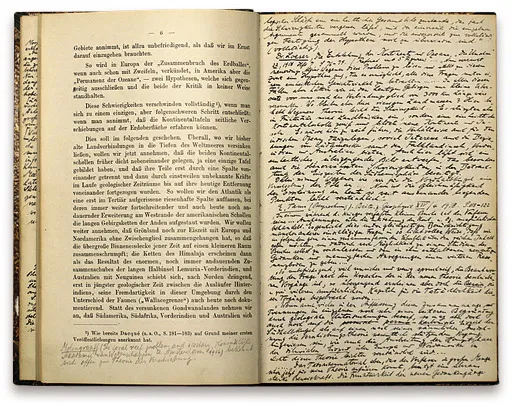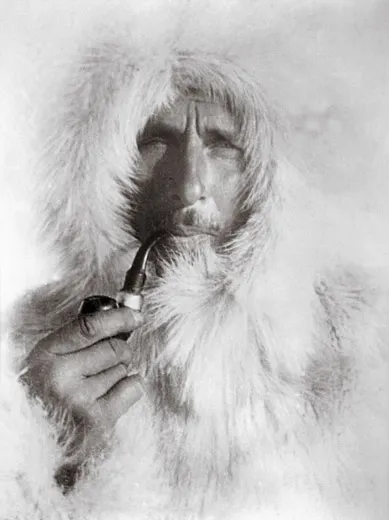When Continental Drift Was Considered Pseudoscience
More than 100 years ago, a German scientist was ridiculed for advancing the shocking idea that the continents were adrift
/https://tf-cmsv2-smithsonianmag-media.s3.amazonaws.com/filer/Science-Alfred-Wegener-631.jpg)
Six seismologists and a civil servant, charged with manslaughter for failing to predict a 2009 earthquake that killed 308 people in the Apennine Mountain city of L’Aquila, in Italy, will serve six years in prison. The charge is remarkable partly because it assumes that scientists can now see not merely beneath the surface of the earth, but also into the future. What’s even more extraordinary, though, is that the prosecutors based their case on a scientific insight that was, not long ago, the object of open ridicule.
[Editor's Note: The story was updated on October 22, 2012, to reflect the decision.]
It was a century ago this spring that a little-known German meteorologist named Alfred Wegener proposed that the continents had once been massed together in a single supercontinent and then gradually drifted apart. He was, of course, right. Continental drift and the more recent science of plate tectonics are now the bedrock of modern geology, helping to answer vital questions like where to find precious oil and mineral deposits, and how to keep San Francisco upright. But in Wegener’s day, geological thinking stood firmly on a solid earth where continents and oceans were permanent features.
We like to imagine that knowledge advances fact upon dispassionate fact to reveal precise and irrefutable truths. But there is hardly a better example of just how messy and emotional science can be than Wegener’s discovery of the vast, turbulent forces moving within the earth’s crust. As often happens when confronted with difficult new ideas, the establishment joined ranks and tore holes in his theories, mocked his evidence and maligned his character. It might have been the end of a lesser man, but as with the vicious battles over topics ranging from Darwinian evolution to climate change, the conflict ultimately worked to the benefit of scientific truth.
The idea that smashed the old orthodoxy got its start on Christmas 1910, as Wegener (the W is pronounced like a V) browsed through a friend’s new atlas. Others before him had noticed that the Atlantic coast of Brazil looked as if it might once have been tucked up against West Africa, like a couple spooning in bed. But no one had made much of it, and Wegener was hardly the logical choice to show what they had been missing. He was a lecturer at Marburg University, not merely untenured but unsalaried, and his specialties were meteorology and astronomy, not geology.
But Wegener was not timid about disciplinary boundaries, or much else. He was an Arctic explorer and a record-setting balloonist, and when his scientific mentor and future father-in-law advised him to be cautious in his theorizing, Wegener replied, “Why should we hesitate to toss the old views overboard?”
He cut out maps of the continents, stretching them to show how they might have looked before the landscape crumpled up into mountain ridges. Then he fit them together on a globe, like jigsaw-puzzle pieces, to form the supercontinent he called Pangaea (joining the Greek words for “all” and “earth”). Next he assembled the evidence that plants and animals on opposite sides of the oceans were often strikingly similar: It wasn’t just that the marsupials in Australia and South America looked alike; so did the flatworms that parasitized them. Finally, he pointed out how layered geological formations often dropped off on one side of an ocean and picked up again on the other, as if someone had torn a newspaper page in two and yet you could read across the tear.
Wegener called his idea “continental displacement” and presented it in a lecture to Frankfurt’s Geological Association early in 1912. The minutes of the meeting noted that there was “no discussion due to the advanced hour,” much as when Darwinian evolution made its debut. Wegener published his idea in an article that April to no great notice. Later, recovering from wounds he suffered while fighting for Germany during World War I, he developed his idea in a book, The Origin of Continents and Oceans, published in German in 1915. When it was published in English, in 1922, the intellectual fireworks exploded.
Lingering anti-German sentiment no doubt intensified the attacks, but German geologists piled on, too, scorning what they called Wegener’s “delirious ravings” and other symptoms of “moving crust disease and wandering pole plague.” The British ridiculed him for distorting the continents to make them fit and, more damningly, for not describing a credible mechanism powerful enough to move continents. At a Royal Geographical Society meeting, an audience member thanked the speaker for having blown Wegener’s theory to bits—then thanked the absent “Professor Wegener for offering himself for the explosion.”
But it was the Americans who came down hardest against continental drift. A paleontologist called it “Germanic pseudo-science” and accused Wegener of toying with the evidence to spin himself into “a state of auto-intoxication.” Wegener’s lack of geological credentials troubled another critic, who declared that it was “wrong for a stranger to the facts he handles to generalize from them.” He then produced his own cutout continents to demonstrate how awkwardly they fit together. It was geology’s equivalent of O.J. Simpson’s glove.
The most poignant attack came from a father-son duo. Like Wegener, University of Chicago geologist Thomas C. Chamberlin had launched his career with an iconoclastic attack on establishment thinking. He went on to define a distinctly democratic and American way of doing science, according to historian Naomi Oreskes. Making the evidence fit grandiose theories was the fatal flaw in Old World science, Chamberlin said; the true scientist’s role was to lay out the facts and let all theories compete on equal terms. Like a parent with his children, he was “morally forbidden to fasten his affection unduly upon any one of them.”
By the 1920s, Chamberlin was the dean of American science and his colleagues fawned that his originality put him on a par with Newton and Galileo. But he had also become besotted with his own theory of earth’s origins, which treated the oceans and continents as fixed features. This “great love affair” with his own work was characterized, historian Robert Dott writes, “by elaborate, rhetorical pirouetting with old and new evidence.” Chamberlin’s democratic ideals—or perhaps some more personal motivation—required grinding Wegener’s grandiose theorizing underfoot.
Rollin T. Chamberlin, who was also a University of Chicago geologist, did his father’s dirty work: The drift theory “takes considerable liberties with our globe,” he wrote. It ignores “awkward, ugly facts” and “plays a game in which there are few restrictive rules.” Young Chamberlin also quoted an unnamed geologist’s remark that inadvertently revealed the heart of the problem: “If we are to believe Wegener’s hypothesis we must forget everything which has been learned in the last 70 years and start all over again.”
Instead, geologists largely chose to forget Alfred Wegener, except to launch another flurry of attacks on his “fairy tale” theory in the middle of World War II. For decades afterward, older geologists warned newcomers that any hint of an interest in continental drift would doom their careers.
Wegener took the assault as an opportunity to refine his ideas and address valid criticisms. When critics said he had not presented a plausible mechanism for the drift, he provided six of them (including one that foreshadowed the idea of plate tectonics). When they pointed out mistakes—his timeline for continental drift was far too short—he corrected himself in subsequent editions of his work. But he “never retracted anything,” says historian Mott Greene, author of an upcoming biography, Alfred Wegener’s Life and Scientific Work. “That was always his response: Just assert it again, even more strongly.” By the time Wegener published the final version of his theory, in 1929, he was certain it would sweep other theories aside and pull together all the accumulating evidence into a unifying vision of the earth’s history. (But even he would have been astonished by the charges against the Italians for failing to turn continental drift into a predictive device; that trial is expected to continue for months.)
The turnabout on his theory came relatively quickly, in the mid-1960s, as older geologists died off and younger ones began to accumulate proof of seafloor spreading and vast tectonic plates grinding across one another deep within the earth.
Wegener didn’t live to see it. Because of a subordinate’s failure, he and a colleague had to make a lifesaving delivery of food to two of his weather researchers spending the winter of 1930 deep in Greenland’s ice pack. The 250-mile return trip to the coast that November turned desperate. Wegener, at 50, yearned to be home with his wife and three daughters. He dreamed of “vacation trips with no mountain climbing or other semi-polar adventures” and of the day when “the obligation to be a hero ends, too.” But a quotation in his notes reminded him that no one accomplished anything worthwhile “except under one condition: I will accomplish it or die.”
Somewhere along the way the two men vanished in the endless snow. Searchers later found Wegener’s body and reported that “his eyes were open, and the expression on his face was calm and peaceful, almost smiling.” It was as if he had foreseen his ultimate vindication.
/https://tf-cmsv2-smithsonianmag-media.s3.amazonaws.com/accounts/headshot/richard-conniff-240.jpg)


/https://tf-cmsv2-smithsonianmag-media.s3.amazonaws.com/accounts/headshot/richard-conniff-240.jpg)